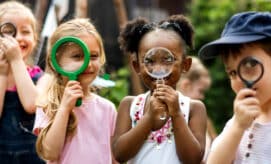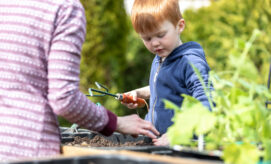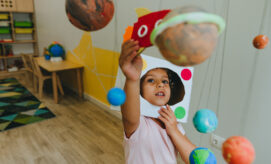Tinkering is a popular term used in many early learning circles to describe a kind of open-ended learning and play. This article explains the benefits of incorporating tinkering into an early learning classroom to promote STEM learning and offers ideas that you might want to try with the children in your classroom or program.
Defining Tinkering
Rachelle Doorley, educator, author, and founder of TinkerLab, shares her definition of a tinkerer: “one who experiments with materials and ideas to fully understand their capacities, and who further iterates on their learning to find better solutions to current problems. Tinkering is about hands-on experiences, learning from failures, and unstructured time to explore and invent.”
There are many definitions of tinkering that float around the world of early childhood education. But, generally speaking, tinkering refers to the kind of open-ended, hands-on, focused exploration of a variety of different materials that often leads to new ideas and discoveries.
An NAEYC article explains, “Children initially use their senses to explore the physical properties of materials. They tinker as they take things apart, put things together, figure out how things work, and attempt to build and make creations using tools.”
Tinkering and Early Learning
One of the cornerstones of tinkering is an emphasis on process over product. The end result is less important than the children’s experiences. Tinkering often looks like children making and creating new things, or exploring different parts to investigate how they work together.
To enhance the tinkering experience, early childhood educators will want to offer a variety of materials for exploration. Tinkering can be supported by asking children open-ended questions like “I wonder what would happen if…?”, by encouraging children to try a variety of approaches, and by reinforcing the satisfaction children can experience when they learn how things work.
For older children, tinkering can be done in a group setting. This offers an opportunity for children to work together and learn important skills in teamwork, problem-solving, collaboration, experimentation, and perseverance.
Tinkering, Making & STEM







